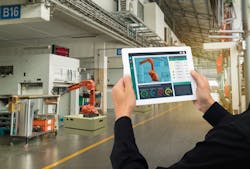It’s been less than a year now since large language model (LLM) artificial intelligence technologies like OpenAI’s ChatGPT became widely available. With all the hype surrounding these technologies, you’re probably already tired of hearing about them but it’s best to realize that things are just getting started with the testing of these LLMs in industry. This means you’ll be hearing a lot more about them in the coming months.
With so many companies and individuals testing the viability of LLMs in manufacturing, the good news is that we should move through the initial hype cycle surrounding LLMs in manufacturing relatively quickly. Of course, that means we’ll get to the “trough of disillusionment” in the near term and move into the “plateau of productivity” based on the proven capabilities of LLMs in manufacturing sooner rather than later. (If you’re unfamiliar with the terminology used here, they come from Gartner’s Hype Cycle, which is used to explain the adoption realities associated with new technology introductions—see accompanying image).
Supporting quality, maintenance and sustainability
One of the drivers behind this integration, according to Hemmelgarn, is that “studies suggest more than 70% of quality issues go unreported” due to limited access to the right tools and difficulties doing this with paper-based processes. “We think AI (artificial intelligence) can help with this by connecting people to solve the issues,” he said.
To explain how this combination of Siemens, Microsoft and OpenAI technologies will work, Hemmelgarn offered an example of a robot in a factory that's consuming too much power. This problem is putting the sustainability goals of the company at risk and the operator who notices the problem wants to log the issue.
“All the operator has to do is speak into the app in any language, because the app will automatically translate it and bring it into OpenAI’s services that will allow us to capture the data,” said Hemmelgarn. “Then we can parse the data and put it into Teamcenter as an issue. So just by speaking into the app, we create an issue report, put the data in the right format, load it into Teamcenter and send a problem report to an automation engineer who then has immediate visibility into the issue.”
Once this report and connection has been established, AI continues collecting information about what's going on to bring in additional background and context.
Other maintenance applications Siemens is exploring with Microsoft Teams and OpenAI involve the use of image association. Hemmelgarn said it’s not unusual for frontline workers to be required to perform a service operation on a component that they aren’t necessarily familiar with. In such cases, they can take a picture of the part and AI will help associate it with the relevant CAD data and drawings to help determine the issue and deliver a response to the worker.
Hemmelgarn added that part and product designers will also be able to use the integrated Siemens, Microsoft and OpenAI technologies to set targets and measure their work against those targets. For example, a designer can look at the component or assembly level of a part and connect them with a company’s sustainability metrics to see if they’re hitting the required goals at the time of design. With this ability, Hemmelgarn said designers can “think differently and work differently” because the technology is not a bolt-on application, but integrated into the Teams and Teamcenter environment they’re already working in. “They can see the bills of material and they’ll have the CO2 attributes and associated cost roll ups to start doing trade-offs between costs and CO2 reduction,” he said. “It gives them a holistic view of what's going on in sustainability.”



